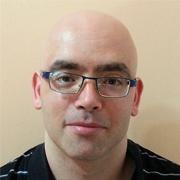Department of Physical Chemistry, School of Chemistry, Faculty of Exact Sciencese
Email: avnerfleisch@tauex.tau.ac.il
Research:
- attosecond Science (High Harmonic Generation, Photoelectron-Photoion Coincidence Spectroscopy)
- Extreme Nonlinear Optics
- Numerical tools: Time-dependent Schrodinger equation (TDSE) description of Atoms and Molecules interacting with Strong Electromagnetic Radiation
The motion of electrons inside and between atomic and molecular systems is at the heart of all phenomena in nature (except for nuclear processes). It is, among others, responsible for the photosynthesis of plants, the emission of light in LASERs, the transport of information in our nerves and the outcome of chemical reactions. In our group we study, image and control the electronic processes accompanying chemical reactions down to the atomic scale and their natural sub-femtoseconds to attosecond timescale (one femtosecond = 10-15 seconds, one attosecond = 10-3 femtoseconds)- a scientific discipline termed “attoChemistry”. We develop a machine (which we call “attoCamera”) capable of producing an ultrafast "movie" of real-time electronic evolution in molecules, with resolution of few attoseconds. The motivation for this effort is associated with both fundamental and applied science: understanding of the electronic evolution in molecules will enable future control scheme of chemical reactions to be developed, and would open exciting new prospects for many research fields, e.g. in material science, life science, basic energy science, ultrafast data storage in electrical and magnetic media, and more.
We use strong lasers producing short pulses of light (whose instantaneous power is 20-times larger than that of the Israel Electric Corporation production capacity) in order to steer and detach electrons inside and between atoms and molecules and by that image electronic orbitals, control electron evolution in chemical reaction, collide electrons and ions which lead to the emission of laser-like x-ray radiation, and more. The research uses state-of-the-art experimental and numerical methodologies from Physics and Optics, applied to the understanding of the very basic foundation of Chemistry.


